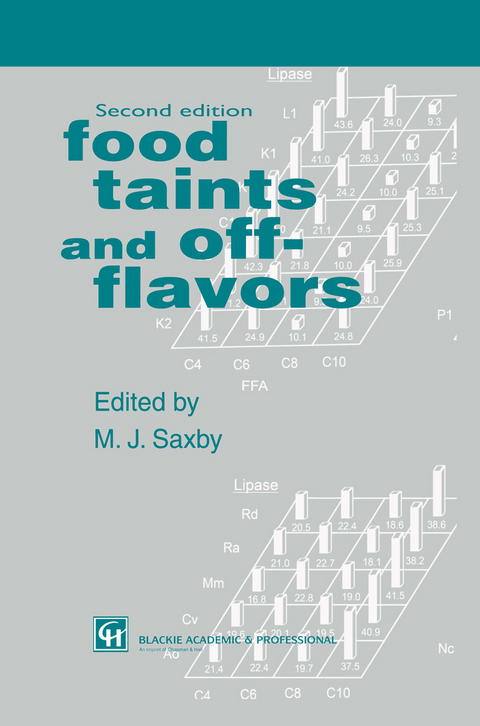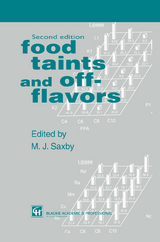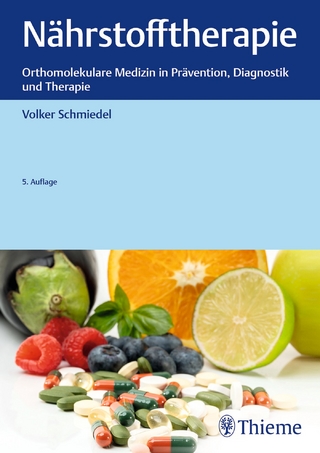Food Taints and Off-Flavours
Chapman and Hall (Verlag)
978-0-7514-0263-6 (ISBN)
1 Sensory evaluation of taints and off-flavours.- 1.1 Introduction.- 1.2 Thresholds and their measurement.- 1.3 Sensory descriptions of taints and off-flavours.- 1.4 Principles of sensory evaluation of food.- 1.5 Sensory testing for taint.- 1.6 Ethical considerations.- 1.7 Future developments.- References.- 2 A survey of chemicals causing taints and off-flavours in foods.- 2.1 Introduction.- 2.2 Taints derived from known chemicals.- References.- 3 Analysis of taints and off-flavours.- 3.1 Introduction.- 3.2 Instrument analysis.- 3.3 Sensory methods.- 3.4 Examples of off-flavour studies.- 3.5 Conclusions.- References.- 4 Taste and odor problems in drinking water.- 4.1 Introduction.- 4.2 Off-flavors in drinking water and their relation to drinking water standards.- 4.3 Classifying tastes and odors.- 4.4 The causes of tastes and odors in water supplies.- 4.5 Cause-and-effect relationships in drinking water taste and odor problems.- 4.6 Specific taste and odor-causing compounds.- 4.7 Treatment of specific odorous chemicals.- 4.8 Taste and odor treatment of off-odors by chlorination and chloramination.- 4.9 Taste and odor treatment of off-odor by ozonation.- 4.10 Taste and odor treatment by carbon adsorption.- 4.11 Summary.- References.- 5 Undesirable flavors in dairy products.- 5.1 Introduction.- 5.2 Sensory characteristics of off-flavors.- 5.3 Transmitted off-flavors.- 5.4 Lipolyzed flavor.- 5.5 Microbial flavors.- 5.6 Heat-induced flavors.- 5.7 Oxidized flavor.- 5.8 Miscellaneous off-flavors.- Acknowledgement.- References.- 6 Oxidative pathways to the formation of off-flavours.- 6.1 Introduction.- 6.2 Unsaturated lipids as off-flavour precursors.- 6.3 Decomposition of hydroperoxides and types of off-flavour compounds.- 6.4 Miscellaneous off-flavours and precursors.- 6.5 Conclusions.- Acknowledgement.- References.- 7 Packaging material as a source of taints.- 7.1 Introduction.- 7.2 Standard odour and taint assessment methods.- 7.3 Printing inks and adhesives.- 7.4 Paper and board packaging.- 7.5 Plastics packaging.- 7.6 Chlorophenols and chloroanisoles.- 7.7 ‘Scalping’ of food aromas and flavours by packaging.- 7.8 Analytical methods for isolating and identifying odorous and tainting substances.- References.- 8 A retailer’s perspective.- 8.1 Introduction.- 8.2 Product recall.- 8.3 Case histories.- 8.4 Avoidance of taint.- Acknowledgement.- 9 Formation of off-flavours due to microbiological and enzymic action.- 9.1 Introduction.- 9.2 Milk and dairy products.- 9.3 Fruit and vegetables.- 9.4 Wine and beer.- 9.5 Meat and fish.- 9.6 Concluding remarks.- Note.- References.- 10 Off-flavours in alcoholic beverages.- 10.1 Introduction.- 10.2 Beer.- 10.3 Cider.- 10.4 Saké.- 10.5 Wine and fortified wine.- 10.6 Conclusions.- Acknowledgments.- References.
| Zusatzinfo | XII, 326 p. |
|---|---|
| Verlagsort | London |
| Sprache | englisch |
| Maße | 155 x 235 mm |
| Themenwelt | Studium ► Querschnittsbereiche ► Prävention / Gesundheitsförderung |
| Naturwissenschaften ► Chemie ► Technische Chemie | |
| Technik ► Lebensmitteltechnologie | |
| ISBN-10 | 0-7514-0263-X / 075140263X |
| ISBN-13 | 978-0-7514-0263-6 / 9780751402636 |
| Zustand | Neuware |
| Haben Sie eine Frage zum Produkt? |
aus dem Bereich




